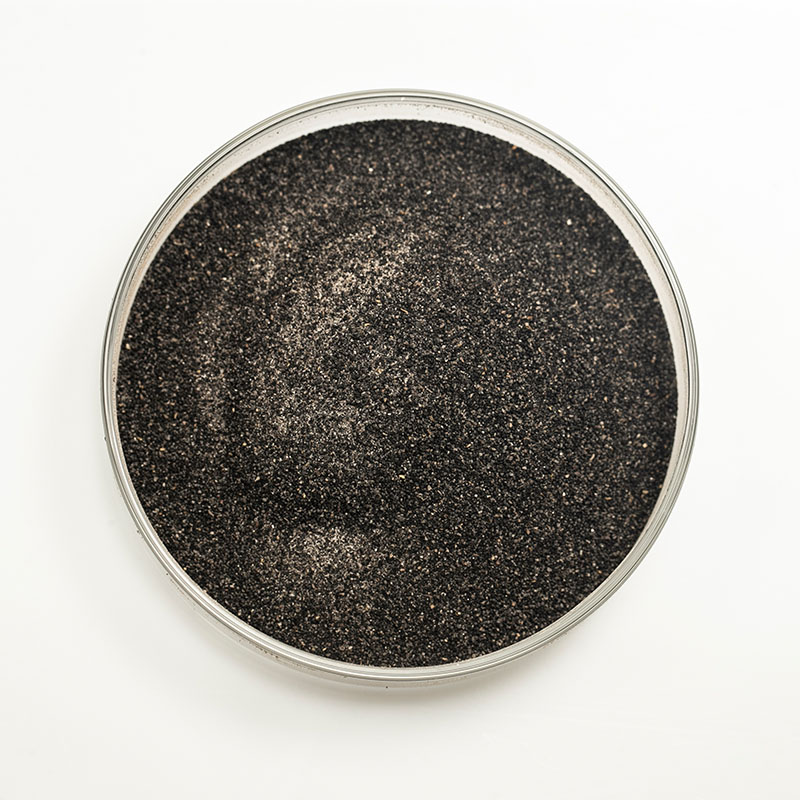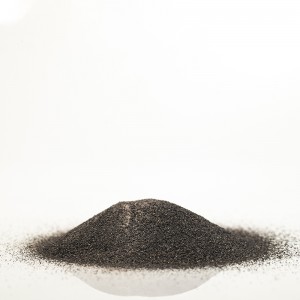Devaila Broiler & Layer & Pig & Ruminant (Metal Amino Acid Complexes)
Devaila (Broiler, Layer, Pig, Ruminant)
Devaila Broiler & Layer & Pig & Ruminant
Metal Amino Acid Complex
Devaila (Broiler, Layer, Pig, Ruminant)——a premier metal amino acid complexes——special designing for broilers, layers, pigs and ruminants.
|
Table 1. Guaranteed values of active ingredients (g/kg) & Characteristics |
||||
|
Devaila Pig |
Devaila Broiler |
Devaila Layer |
Devaila Ruminant |
|
|
Fe |
30 |
25 |
26 |
20 |
|
Zn |
25 |
40 |
25 |
30 |
|
Mn |
10 |
50 |
32 |
20 |
|
Cu |
10 |
4 |
9 |
10 |
|
I |
0.60 |
0.80 |
0.80 |
0.60 |
|
Se |
0.35 |
0.70 |
0.35 |
0.30 |
|
Co |
—— |
—— |
—— |
0.30 |
|
Application instructions |
Suckling pig & Breeding pig: 800-1200g |
350-500g |
Early laying period: 500-800g |
Beef cattle & Mutton sheep: 400-600g |
|
Crude Ash |
55-60% |
45-50% |
50-55% |
55-60% |
|
Crude Protein |
20-25% |
20-25% |
20-25% |
15-20% |
|
Density (g/ml) |
1.0-1.2 |
1.0-1.1 |
1.0-1.1 |
1.0-1.2 |
|
Particle Size Range |
0.60mm pass rate 90% |
|||
|
Appearance |
Black grey powder |
|||
|
Pb≤ |
5mg/kg |
|||
|
As≤ |
1mg/kg |
|||
|
Cd≤ |
1mg/kg |
|||
Note: Can be customized in accordance to animal species, please contact local distributor.
Ingredients: Iron amino acid complexes, zinc amino acid complexes, manganese amino acid complexes, copper amino acid complexes, calcium iodate (high stability spray type), sodium selenite (safe spray type).
Shelf life: 24 Months
Packing:25KG/BAG
Storage condition: in cool,dry and dark place, air-ventilation
Commercial value
1. Chelation stability constant is high, and there is little dissociation in gastrointestinal tract, so the addition amount is low.
2. Low addition, low oxidation and high feed stability.
3. High absorption rate, less discharge in feces, reducing damage to the environment;
4. Low addition cost, equivalent to inorganic addition cost;
5. Fully organic and multi mineral, reducing the oxidation of feed and the stimulation of animal gastrointestinal tract, and improving palatability;
6. Fully organic and multi mineral, improving the selling point of feed.
Product Advantages
Similar in structure to small peptides, absorbed through the absorption channel of small peptides in the intestinal tract of animals.
1. Stable in the stomach and absorbed in the intestine
2. Absorbed in the form of independent and complete small peptides
3. Different from the amino acid absorption channel, not affected by amino acid absorption antagonism
4. Fast transfer speed and low energy consumption
5. The absorption process is not easy to be saturated
6. The chelation of metal ions and small peptides can inhibit the hydrolysis activity of peptidases on the brush border and prevent the hydrolysis of peptides, then the intact peptides are used as mineral ligands to enter mucosal cells through the peptide transport mechanism
Product Efficacy
1. Meet the nutritional needs of animals for trace elements and maintain the normal metabolism of trace elements.
2. Improve daily weight gain and immunity of suckling piglets and improve fur traits.
3. Improve the reproductive performance of sows and improve the conception rate and the number of piglets born alive, and prevent the occurrence of toe and hoof diseases.
4. Increase the daily weight gain of broilers and reduce FCR, promote skeletal development.
5. Improve the egg-laying performance and eggshell quality of laying birds, reduce the egg breaking rate, and prolong the peak laying period.
6. Improve the diet digestibility and milk production of ruminant.
7. Improve the growth rate and immunity of aquatic animals.
Product Values
1. High chelation stability constant and less dissociation in the gastrointestinal tract, lead to a lower dosage
2. Low dosage, low oxidation and high feed stability
3. High absorption rate, less discharge in feces, reducing damage to the environment
4. Much lower cost, equivalent to ITM’s
5. Reduce the oxidation of feed and the stimulation to the gastrointestinal tract of animals, improve palatability
Tests
I. Study on the Influence of Devaila and ITM on the Stability of Vitamins
Prepare the treatments with Devaila and different trace minerals. Each 200g/bag was sealed in a double-layer plastic bag and stored in an incubator away from light. Take out a certain amount every 7, 30 and 45 days, measure the content of vitamins (select a more representative VA) in the premix in the bag and calculate the loss rate. According to the loss rate results, the influence of Devaila and ITM on the stability of vitamins was studied.
|
Table 2. Treatment of test groups |
||
|
No. |
Group |
Treatment |
|
1 |
A |
Multi-Vitamins Group |
|
2 |
B |
Devaila Group+ Multi-Vitamins |
|
3 |
C |
ITM Group 1+Multi-Vitamins |
|
4 |
D |
ITM Group 2+Multi-Vitamins |
|
Table 3. Content of trace elements in different groups (g/kg) |
|||
|
Element |
Group B |
Group C |
Group D |
|
Fe |
30 |
30 |
100 |
|
Cu |
8 |
8 |
15 |
|
Zn |
25 |
25 |
60 |
|
Mn |
10 |
10 |
40 |
|
I |
0.80 |
0.80 |
0.80 |
|
Se |
0.35 |
0.35 |
0.35 |
|
Table 4. VA loss at 7d, 30d, 45d |
|||
|
Group |
Loss rate at 7d (%) |
Loss rate at 30d (%) |
Loss rate at 45d (%) |
|
A (Control) |
3.98±0.46 |
8.44±0.38 |
15.38±0.56 |
|
B |
6.40±0.39 |
17.12±0.10 |
28.09±0.39 |
|
C |
10.13±1.08 |
54.73±2.34 |
65.66±1.77 |
|
D |
13.21±2.26 |
50.54±1.25 |
72.01±1.99 |
From the results in the above tables, it can be seen that Devaila can greatly reduce the oxidative damage to vitamins compared with ITM. Improve the retention of vitamins in the feed, reduce the loss of nutrient elements in the feed, and improve economic benefits.
II. Experiment on the effect of Devaila Broiler on the production performance of broilers
1,104 healthy, 8-day-old Ros308 broilers were selected and randomly divided into 2 groups, with 12 replicates in each group, 46 chickens in each replicate, half male and female, and the experimental period was 29 days and ended at 36 days of age. See the table below for grouping.
|
Table 5. Treatment of test groups |
|
|
Group |
Dosage |
|
A |
ITM 1.2kg |
|
B |
Devaila Broiler 0.5kg |
a) Growth Performance
|
Table 6 Growth performance at 8-36d old |
|||
|
Item |
ITM 1.2kg |
Devaila Broiler 500g |
P-value |
|
Survival rate (%) |
97.6±3.3 |
98.2±2.6 |
0.633 |
|
Initial wt (g) |
171.7±1.1 |
171.2±1.0 |
0.125 |
|
Final wt (g) |
2331.8±63.5 |
2314.0±50.5 |
0.456 |
|
Weight gain (g) |
2160.0±63.3 |
2142.9±49.8 |
0.470 |
|
Feed intake (g) |
3406.0±99.5 |
3360.1±65.9 |
0.202 |
|
Feed to weight ratio |
1.58±0.03 |
1.57±0.03 |
0.473 |
b) Mineral contents in serum
|
Table 7. Mineral contents in serum at 36d old |
|||
|
Item |
ITM 1.2kg |
Devaila Broiler 500g |
P-value |
|
Mn (μg/ml) |
0.00±0.00a |
0.25±0.42b |
<0.001 |
|
Zn (μg/ml) |
1.98±0.30 |
1.91±0.30 |
0.206 |
Based on the above data, it can be seen that the addition of 500g of Devaila Broiler can meet the nutritional needs of broilers without affecting any growth performance indicators of broilers. At the same time, it can significantly increase the deposition of trace elements in the blood of 36-day-old broilers and reduce the cost of trace elements.
III. Experiment on the effect of Devaila Layer on the production performance of laying hens
1,080 healthy, 400-day-old Jinghong laying hen (a popular brown egg laying hen breed in China) in good body condition and normal egg production rate were selected, randomly divided into 5 groups, each group had 6 replicates, each replicate 36 chickens (upper, middle and lower 3 layers, 3 birds per unit cage, each replicate included 12 unit-cages). The pre-feeding period was 10 days, and the basal diets without added trace elements were fed. At the end of the pre-feeding period, the egg production rate and average egg weight of each treatment group were counted. The formal test was started when there were no significant differences after analysis. Feed the basal diet (without additional trace elements) or supplement the basal diet with trace elements (Cu, Zn, Mn, Fe) from inorganic or organic sources during the normal feeding period. The experimental feeding period was 8 weeks.
|
Table 8. Treatment of test groups (g/kg) |
||||||
|
Item |
Group |
A |
B |
C (20%) |
D (30%) |
E (50%) |
|
Fe |
Amino Acid Ferrous Complex |
—— |
12 |
18 |
30 |
|
|
Ferrous Sulfate |
—— |
60 |
||||
|
Cu |
Amino Acid Copper Complex |
—— |
2 |
3 |
5 |
|
|
Copper Sulfate |
—— |
10 |
||||
|
Zn |
Amino Acid Zinc Complex |
—— |
16 |
24 |
40 |
|
|
Zinc Sulfate |
—— |
80 |
||||
|
Mn |
Amino Acid Manganese Complex |
—— |
16 |
24 |
40 |
|
|
Manganese Sulfate |
—— |
80 |
||||
a) Growth Performance
|
Table 9. Effects of different experimental groups on the laying performance of laying hens (full test period) |
||||||
|
Item |
A |
B |
C (20%) |
D (30%) |
E (50%) |
P-value |
|
Laying rate (%) |
85.56±3.16 |
85.13±2.02 |
85.93±2.65 |
86.17±3.06 |
86.17±1.32 |
0.349 |
|
Avg egg wt (g) |
71.52±1.49 |
70.91±0.41 |
71.23±0.48 |
72.23±0.42 |
71.32±0.81 |
0.183 |
|
Daily feed intake (g) |
120.32±1.58 |
119.68±1.50 |
120.11±1.36 |
120.31±1.35 |
119.96±0.55 |
0.859 |
|
Daily egg production (g) |
61.16±1.79 |
60.49±1.65 |
59.07±1.83 |
62.25±2.32 |
61.46±0.95 |
0.096 |
|
Feed egg ratio |
1.97±0.06 |
1.98±0.05 |
2.04±0.07 |
1.94±0.06 |
1.95±0.03 |
0.097 |
|
Broken egg rate (%) |
1.46±0.53a |
0.62±0.15bc |
0.79±0.33b |
0.60±0.10bc |
0.20±0.11c |
0.000 |
According to the data results of the whole period of the above test, adding Devaila Layer with 30% ITM content in the diet of laying hens can completely replace ITM without affecting the production performance of laying hens. After improved the dosage of Devaila Layer, the broken egg rate decreased significantly.
Packing: 25kg/bag
Shelf Life: 24 months









